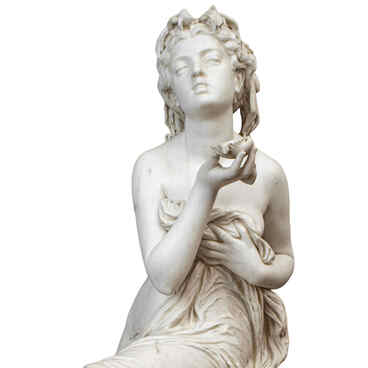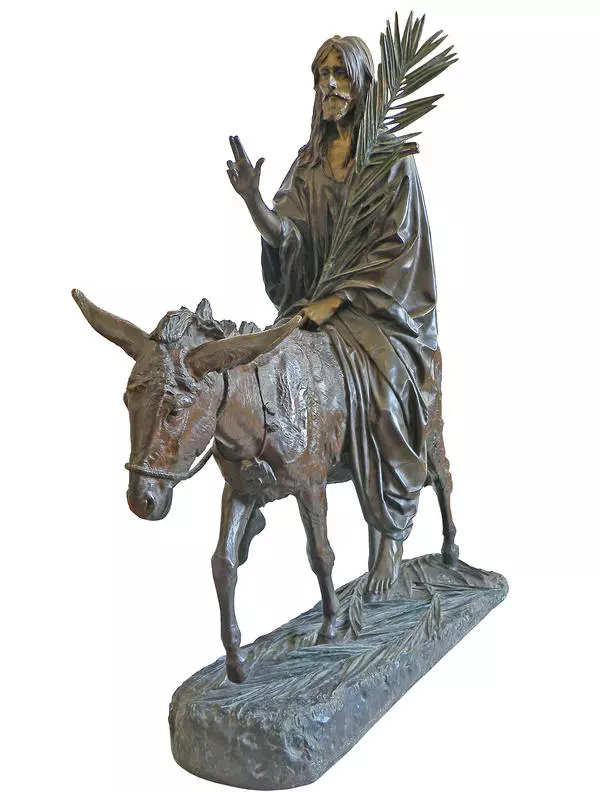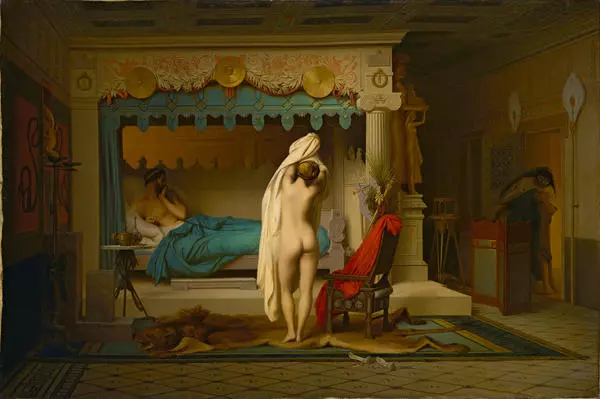Jean-Léon Gérôme was born in 1824 into a family of jewelers in Vézoule, France. As a young man he went to Paris, where he became an apprentice to Paul Delaroche, a portrait painter of the great emperors. With him, Gérôme traveled to Italy, where he practiced drawing and painting from life. He also worked in the studio of Charles Glair, which trained the famous Impressionists, and studied art at the Académie des Beaux-Arts. Together with his artist friends he created an artistic commune, which subsequently became known as the “Gérôme School”.
At the same time, he participated in Paris Salons, gaining increasing popularity. In particular, in 1850, he presented a sketch at a major art exhibition in the capital titled “The Greek Interior”, which depicted the everyday life of a lupanar, an ancient brothel. There was a scandal, which only subsided when Louis Napoleon, the president of the Republic, bought the painting.
The painter owed his success not only to the artistic merits of his works, but also to the subjects themselves — the scenes from ancient mythology and French history, to which he daringly introduced elements of eroticism. One of the qualities of the painter’s versatiity consisted in his ability to temper the seductiveness of the subject with precise sculptural work. He showed a kind of cold attitude to what is able to excite sensuality in the viewer. His powers of observation manifested themselves in his depiction of the fine details of the subject, as well as in his impeccable rendering of contrasts, both in landscapes and in portraits.
Throughout his life, Gérôme enjoyed the unfailing favor of critics. For his artistic merits, the artist was elected member of the Institut de France, then appointed Officer of the Legion of Honor, and later elected Honorary Member of the British Royal Academy. During the last years of his life Gérôme tried his hand at sculpture.
At the same time, he participated in Paris Salons, gaining increasing popularity. In particular, in 1850, he presented a sketch at a major art exhibition in the capital titled “The Greek Interior”, which depicted the everyday life of a lupanar, an ancient brothel. There was a scandal, which only subsided when Louis Napoleon, the president of the Republic, bought the painting.
The painter owed his success not only to the artistic merits of his works, but also to the subjects themselves — the scenes from ancient mythology and French history, to which he daringly introduced elements of eroticism. One of the qualities of the painter’s versatiity consisted in his ability to temper the seductiveness of the subject with precise sculptural work. He showed a kind of cold attitude to what is able to excite sensuality in the viewer. His powers of observation manifested themselves in his depiction of the fine details of the subject, as well as in his impeccable rendering of contrasts, both in landscapes and in portraits.
The painter’s impeccably correct drawing, careful brushwork and somewhat grayish but extremely harmonious coloring distinguished his style. The artist was especially skillful in chiaroscuro, which is demonstrated by the image of the Italian shepherd “Pifferaro” in the picture created in 1857.
Throughout his life, Gérôme enjoyed the unfailing favor of critics. For his artistic merits, the artist was elected member of the Institut de France, then appointed Officer of the Legion of Honor, and later elected Honorary Member of the British Royal Academy. During the last years of his life Gérôme tried his hand at sculpture.





